Flood over Bridge CFD simulation, ANSYS Fluent Tutorial
$80.00 $40.00 Student Discount
- The problem numerically simulates the Flood over Bridge using ANSYS Fluent software.
- We designed the model by Design Modeler software.
- The elements are generated with ANSYS Meshing software, and the element number equals 844,311.
- We perform this simulation as unsteady (Transient).
- The multiphase VOF model is used to model the air and water phases.
To Order Your Project or benefit from a CFD consultation, contact our experts via email (info@mr-cfd.com), online support tab, or WhatsApp at +44 7443 197273.
There are some Free Products to check our service quality.
If you want the training video in another language instead of English, ask it via info@mr-cfd.com after you buy the product.
Description
Description
A flood is an overflow of water that submerges land that is usually dry. Floods are an area of study of the discipline hydrology and are of significant concern in agriculture, civil engineering and public health.
Flooding may occur as an overflow of water from water bodies, such as a river, lake, or ocean, in which the water overtops or breaks levees, resulting in some of that water escaping its usual boundaries, or it may occur due to an accumulation of rainwater on saturated ground.
Floods can also occur in rivers when the flow rate exceeds the capacity of the river channel, particularly at bends or meanders in the waterway. Floods often cause damage to homes and businesses if they are in the natural flood plains of rivers.
The geometry of the present project is designed in Design modeler and meshed in ANSYS Meshing software. The mesh type is unstructured and the element number is equal to 844,311.
Flood over Bridge Methodology
The VOF multiphase module was used in this simulation to model the two phases of water and air. Water enters the computational domain, a dry river, with a velocity of 10 m/s.
Furthermore, standard k-epsilon model is used to solve the turbulent fluid equations. The present study is performed in transient format and 3D. Also, the gravity was enabled and set to -9.81 m/s2 in the Y direction.
Conclusion
The obtained results clearly show that how floods can harm human-made structures (bridge in this case) and lead to their destruction. One of the most prominent factors in this regard is the shear stress that is exerted upon the pillars of a structure. As shown in the obtained results, the amount of shear stress applied to the bridge’s pillars is considerable.
This result can be used in applications such as designing a suitable type of pillars for bridges that are capable of withstanding such drastic events such as a flood.
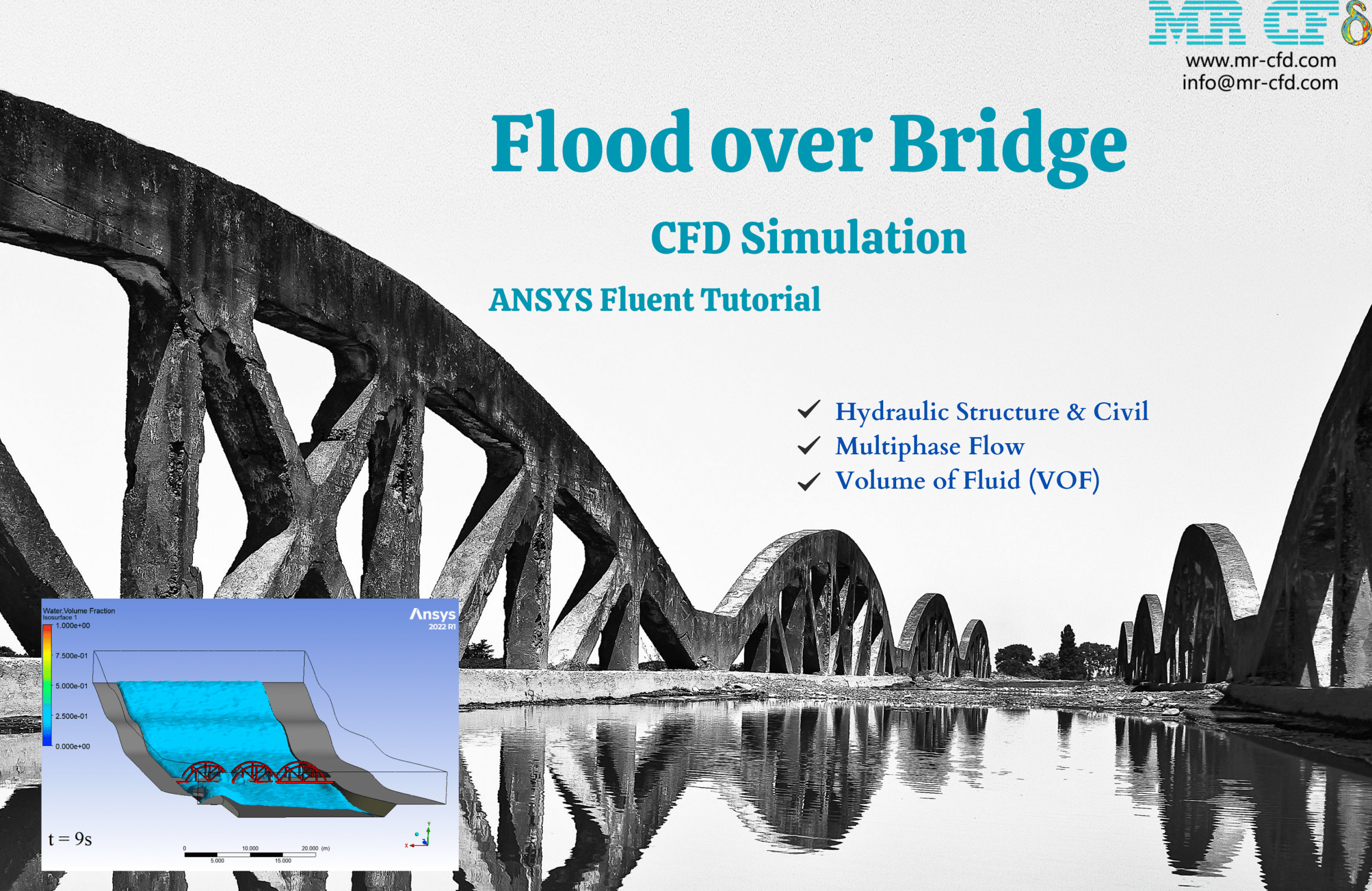
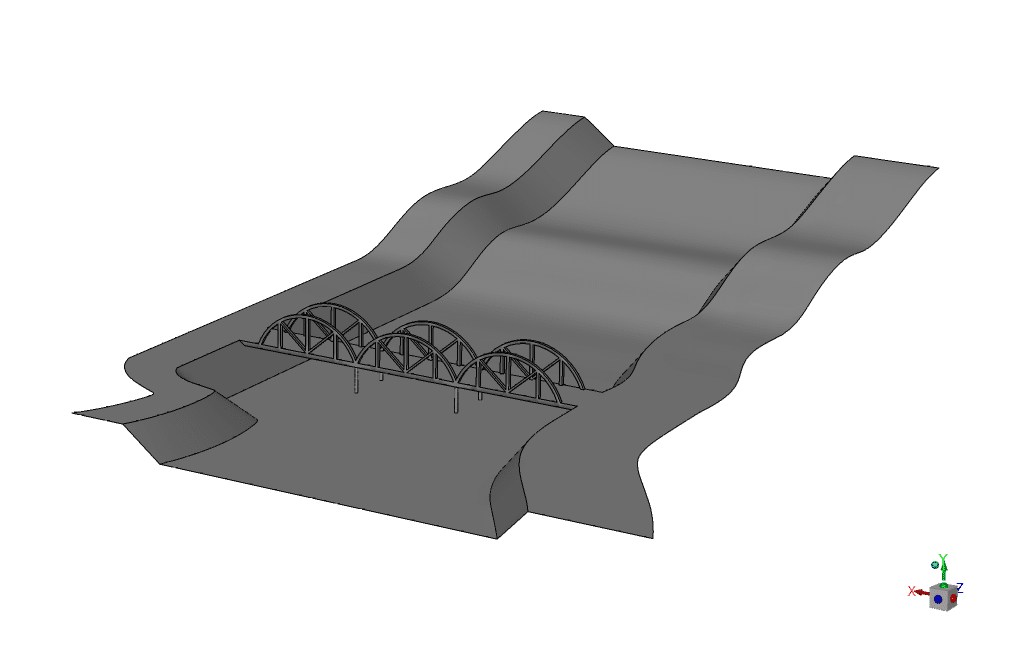
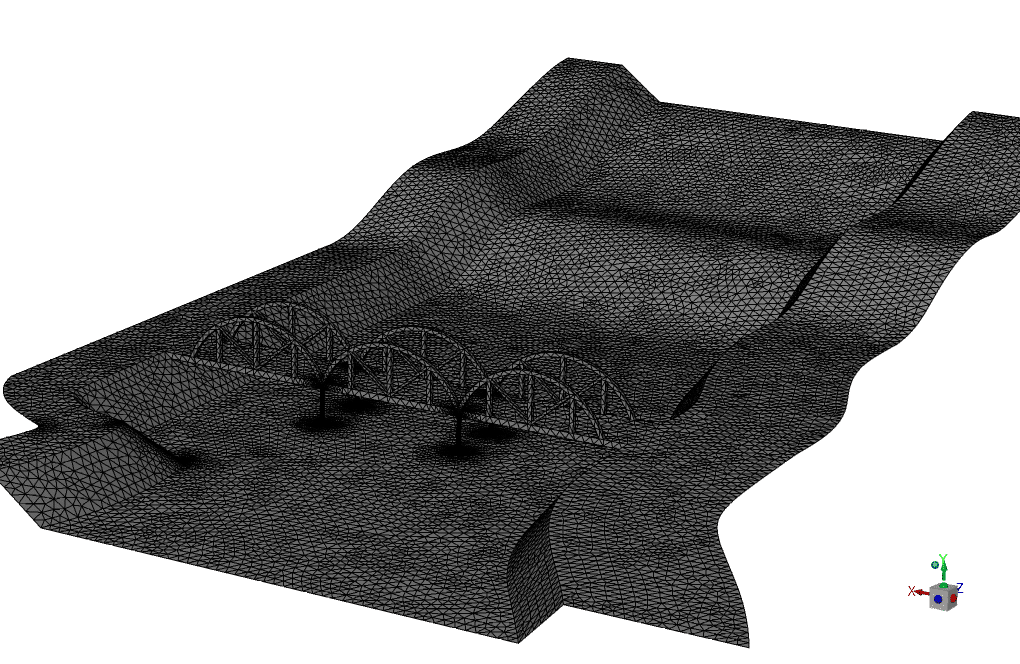
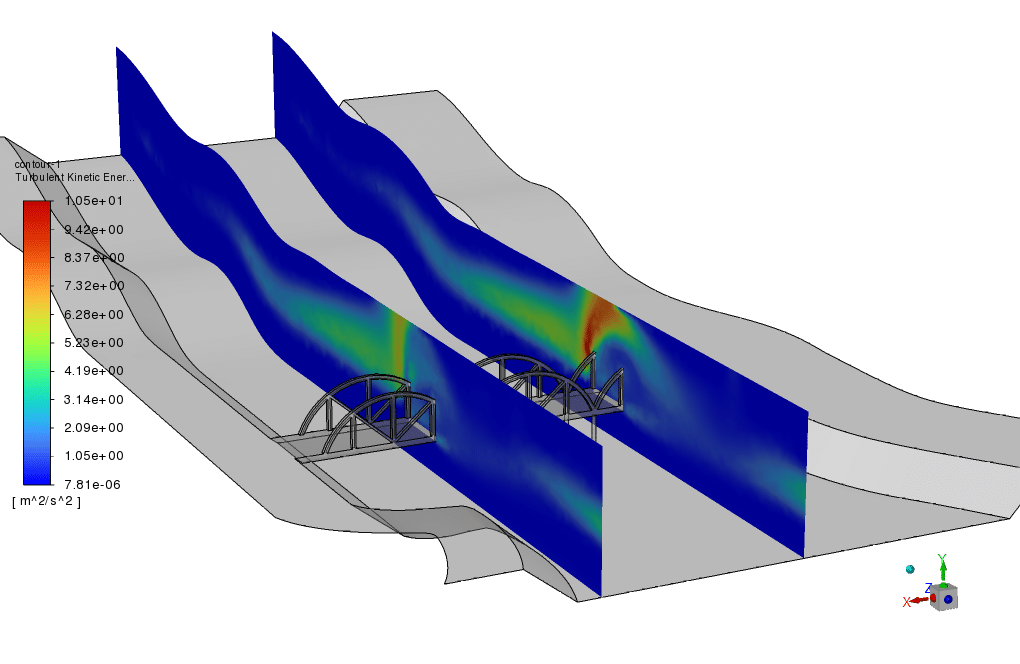
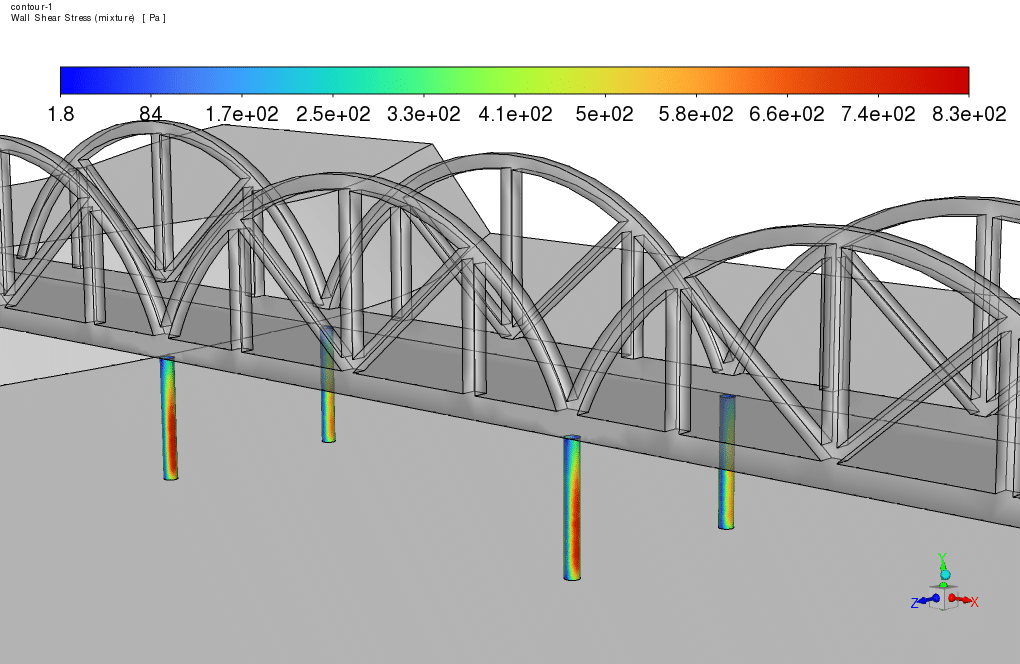
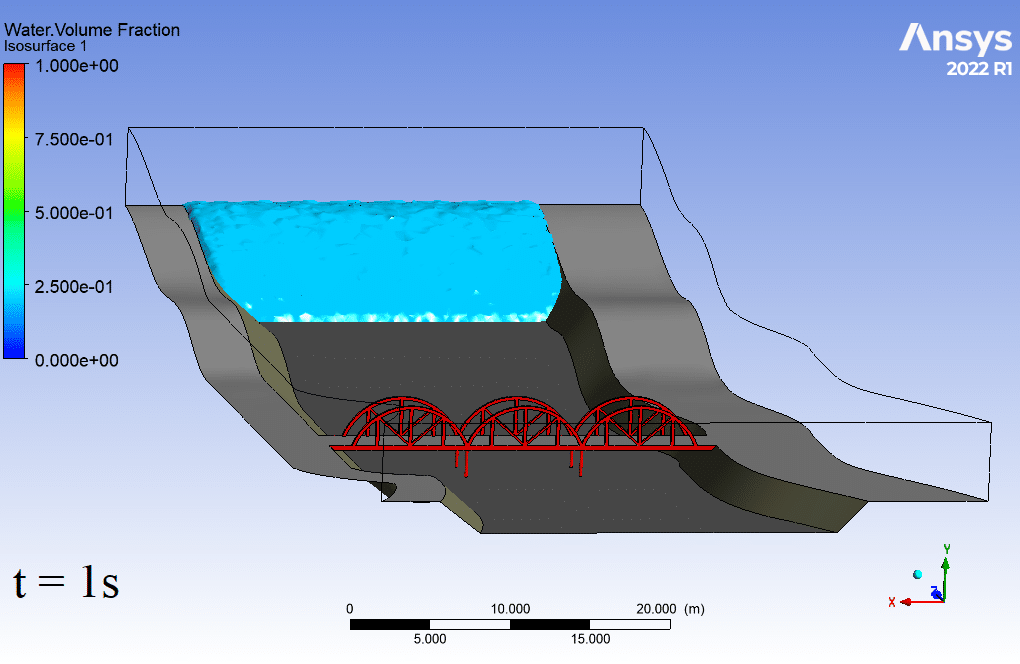
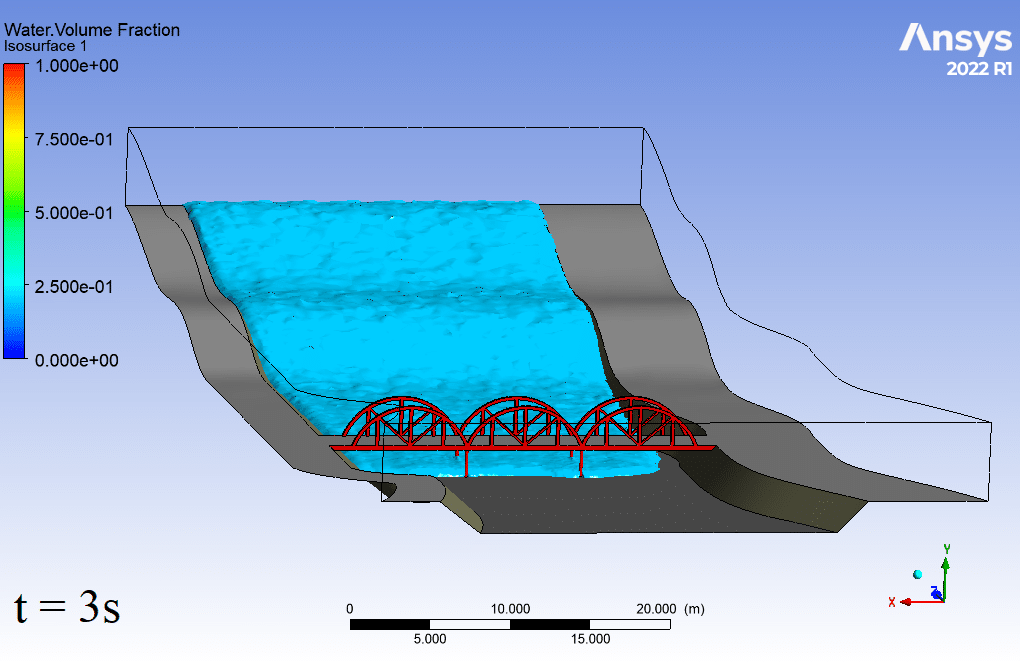
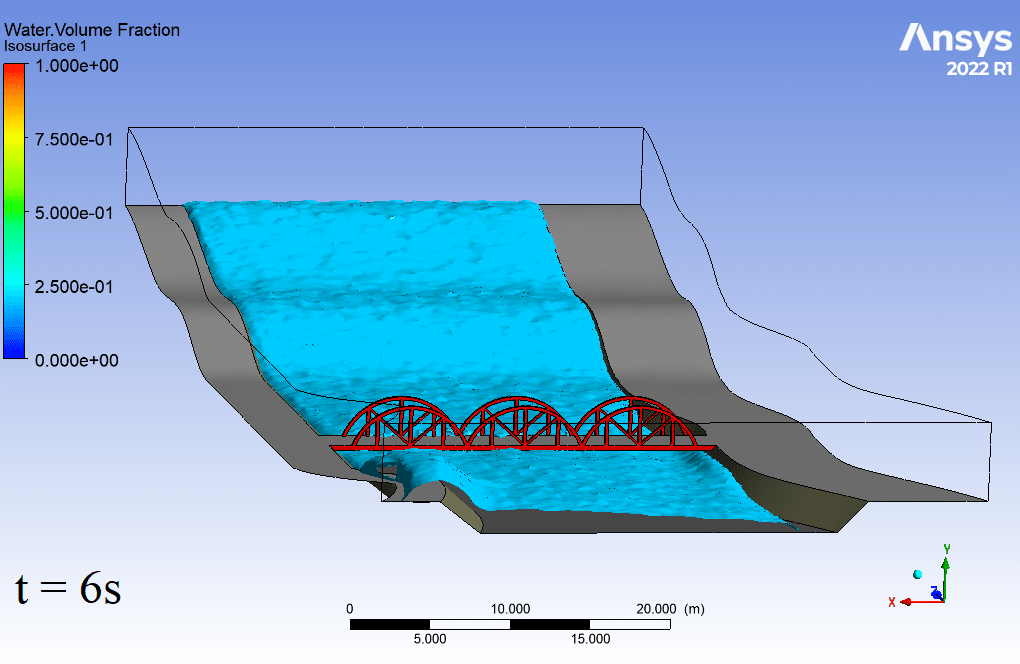
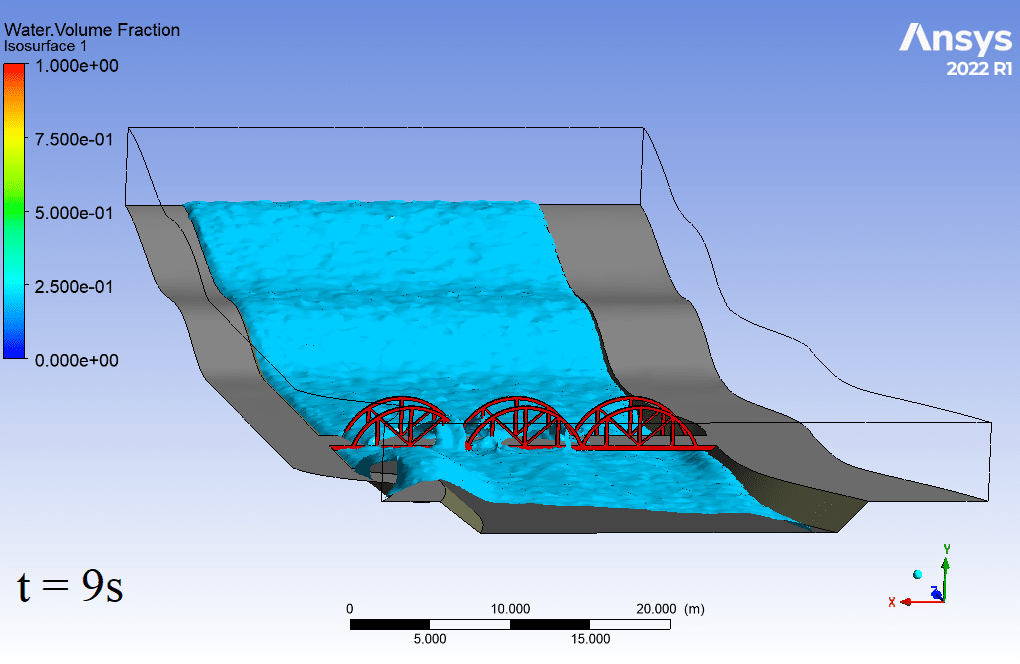
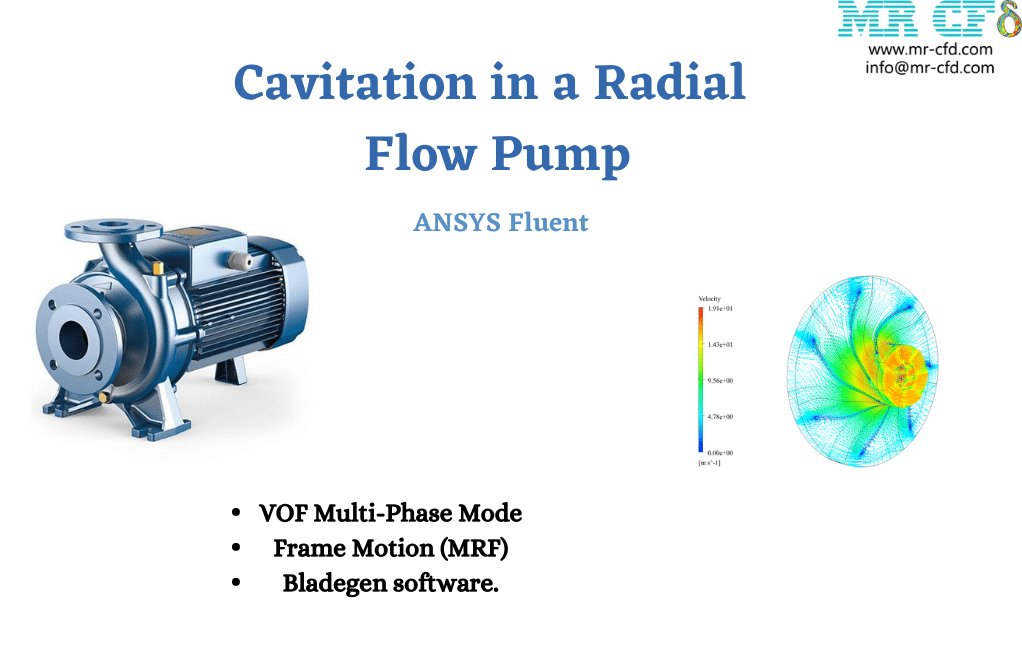

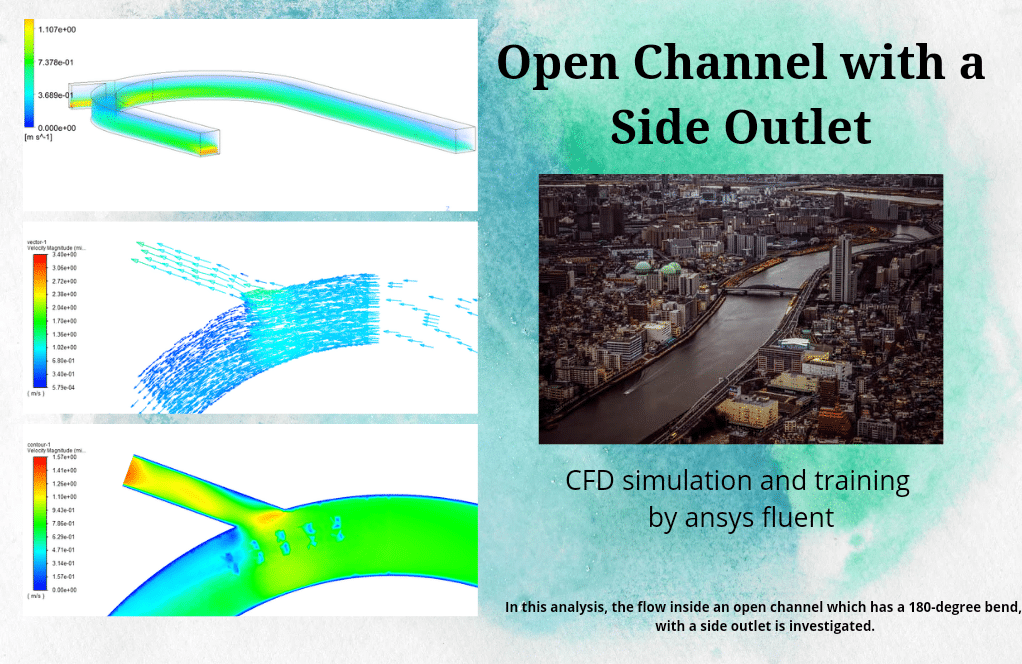

Reviews
There are no reviews yet.